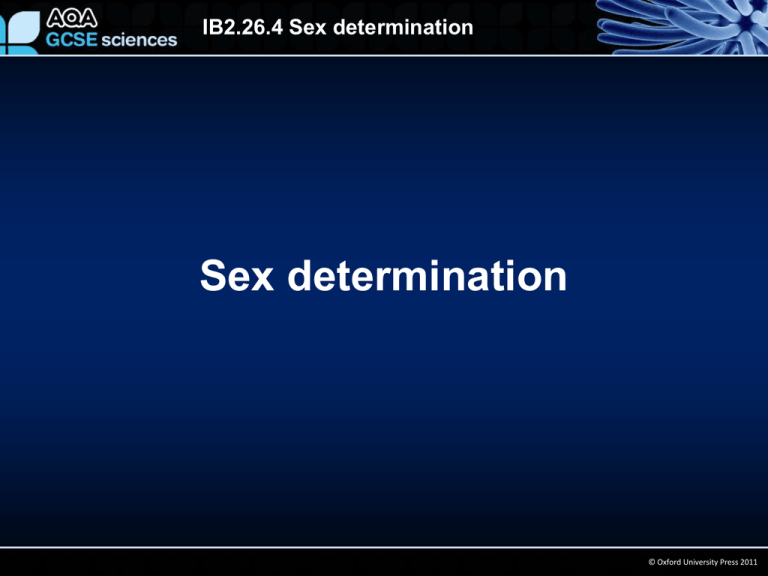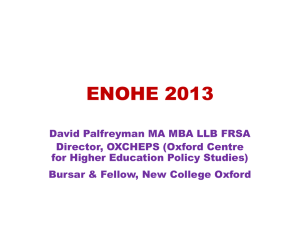
IB2.26.4 Sex determination
Sex determination
© Oxford University Press 2011
IB2.26.4 Sex determination
We can use a genetic diagram to show how sex (gender) can be
determined. The diagram shows how there is an equal chance that each
baby will be a girl or a boy.
Click to advance the diagram.
© Oxford University Press 2011
IB2.26.4 Sex determination
We can use a genetic diagram to show how sex (gender) can be
determined. The diagram shows how there is an equal chance that each
baby will be a girl or a boy.
Click to advance the diagram.
© Oxford University Press 2011
IB2.26.4 Sex determination
We can use a genetic diagram to show how sex (gender) can be
determined. The diagram shows how there is an equal chance that each
baby will be a girl or a boy.
Click to advance the diagram.
© Oxford University Press 2011
IB2.26.4 Sex determination
We can use a genetic diagram to show how sex (gender) can be
determined. The diagram shows how there is an equal chance that each
baby will be a girl or a boy.
Click to advance the diagram.
© Oxford University Press 2011
IB2.26.4 Sex determination
We can use a genetic diagram to show how sex (gender) can be
determined. The diagram shows how there is an equal chance that each
baby will be a girl or a boy.
Click to advance the diagram.
© Oxford University Press 2011
IB2.26.4 Sex determination
You should note that:
Half the male gametes (sperm)
have an X chromosome and half
have a Y chromosome.
However, all the female
gametes (eggs) have an X
chromosome.
Fertilization is random and
either type of sperm could
fertilize an egg.
At each pregnancy, there is a
50:50 chance of conceiving a
girl or a boy.
In a large population, there will
be equal numbers of male and
female offspring.
© Oxford University Press 2011
IB2.26.4 Sex determination
When constructing a genetic diagram for a monohybrid cross, it
is important to follow these conventions:
Show the characteristic of the parents (phenotype).
Show the alleles present in the parents’ cells (genotypes).
Use upper case letters to represent a dominant allele.
Use the lower case version of the same letter to show a
recessive allele.
Put gametes in circles.
Show all the different possible combinations of alleles at
fertilization.
Put an ‘x’ to show a cross (mating).
© Oxford University Press 2011
IB2.26.4 Sex determination
Below is an example of how you might construct a genetic diagram to
explain a monohybrid cross between a father who has two alleles for
free earlobes and a mother who has two alleles for attached earlobes.
Which conventions of drawing genetic diagrams do you recognize?
Offsprings’ characteristics: all have free earlobes but have one
dominant and one recessive allele
© Oxford University Press 2011
IB2.26.4 Sex determination
Below is an example of how to write
the last genetic diagram as a punnet
square.
Ee
Ee
Ee
Ee
© Oxford University Press 2011
IB2.26.4 Sex determination
Now have a go at your own punnet squares
1. A Blue eyed mum (bb) crossed with a Brown eyed father
(BB)
2. A Tortoise shell cat (TT) crossed with a Ginger hair cat (tt)
3. A brown eyed mum (Bb) crossed with a Brown eyed father
(Bb)
4. A Red flowered pea plant (Rr) crossed with a Yellow pea
plant (rr)
5. A Wrinkled pea (WW) With a Smooth pea (ww)
© Oxford University Press 2011






